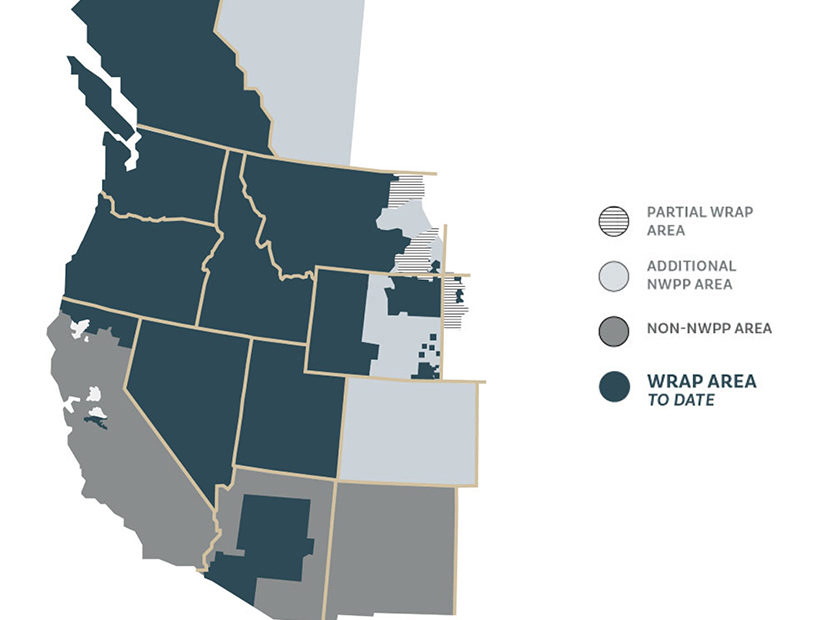
FERC on Friday approved the tariff for the Western Power Pool’s Western Resource Adequacy Program, a groundbreaking reliability effort covering much of the Western Interconnection that is meant to ensure members have sufficient resources to meet summer and winter peak demands (ER22-2762).
The commission’s approval means the WRAP can move forward with its plans to begin a binding phase of the program by 2025, including penalties for members that fail to meet their obligations.
“Through increased coordination, we find that the WRAP has the potential to enhance resource adequacy planning, provide for the benchmarking of resource adequacy standards and more effectively encourage the use of Western regional resource diversity compared to the status quo,” FERC said in its decision.
At least 11 utilities had committed by December to joining the binding iteration of the WRAP. The nonbinding phase of the program has 26 participants, many of whom are expected to move into the next phase. (See Western RA Program Secures First ‘Binding’ Phase Participants.)
WPP has been developing the WRAP since 2020. The program initially was meant to address concerns that Northwest utilities had been increasingly and unknowingly drawing on the same shrinking pool of reliability resources, but interest in the effort spread quickly to other areas of the West.
WPP selected SPP to develop and operate the technical aspects of the program, providing the market’s forward-showing functions, modeling and system analytics, and real-time operations.
In a move that signified its expanding reach across the Western Interconnection, the Northwest Power Pool rebranded itself as the Western Power Pool in February 2022. The WPP board approved the tariff in August, sending it to FERC. (See Western Power Pool Board Approves WRAP Tariff.)
The commission responded in November with a deficiency letter that asked WPP to provide clarifications on the tariff filing, including about the program’s proposed requirement that participants secure transmission rights well in advance and about its intent to hire an independent evaluator to assess its performance. (See FERC IDs Deficiencies in Western RA Program.)
WPP responded to FERC’s questions Dec. 12, leading to the commission’s determination Friday.
FERC addressed a number of comments, protests and concerns, including questions about transmission commitments. The program’s forward-showing component requires participants to show they have sufficient capacity and 75% of the transmission necessary to deliver it seven months ahead of each summer and winter. Penalties will apply to those who do not.
The Northwest & Intermountain Power Producers Coalition (NIPPC) argued that the “required use of firm transmission contradicts the commission’s allowance for use of non-firm transmission in similar circumstances,” FERC said.
NIPPC also had “concerns with the 75% forward-showing transmission requirement, including the lack of support for the specific figure of 75%, the potential for market power being exercised by incumbent firm transmission rights holders and transmission providers, and the practical reality that transmission providers regularly release sufficient short-term [available transfer capability] well after the WRAP’s forward-showing deadlines to meet program needs.”
“NIPPC states that this will lead to regular requests for exceptions,” the commission said.
FERC disagreed with NIPPC’s protest. WPP’s forward-showing program “includes reasonable requirements to ensure deliverable resource adequacy, while also providing necessary flexibility to participants. Further, we find that the requirements of the proposed program can help to enhance price formation in the Western Interconnection by sending price signals to market participants regarding the availability of capacity and firm transmission service and the need for future market entry.”
With respect to the independent evaluator, FERC staff had asked WPP in November whether the evaluator’s report would be made public.
WPP responded that the evaluator’s annual reports are “intended to be made public” and proposed a tariff revision to explicitly state that the “independent evaluator’s annual reports shall be made available to the public, except to the extent that they contain information designated as confidential under this tariff, or information designated as confidential by the independent evaluator.”
FERC accepted WPP’s clarification and tariff revision.
“We recognize that for the commission, state regulators, participants and other stakeholders, the independent evaluator’s reports will be a key source of information and analysis on the WRAP’s operation,” FERC said. “Further, the WRAP is a novel design for the Western Interconnection, and as the program matures, the insight into its functioning will provide useful information and transparency to all stakeholders.”
In a news release Friday, WPP CEO Sarah Edmonds said, “We’re so pleased that FERC shared the industry’s appreciation for the value of a regionwide resource adequacy program and supported our vision for it. This is a critical step for the West to help ensure that we can achieve a clean energy future, without sacrificing reliability.”
The WPP will next make governance changes required by the tariff by seating an independent board of directors that it named in October.
“Our governance model, including an independent board of directors, is a critical piece of the WRAP,” Edmonds said. It “was demanded by our stakeholders and establishes the standard for regional organizations like this one.”

